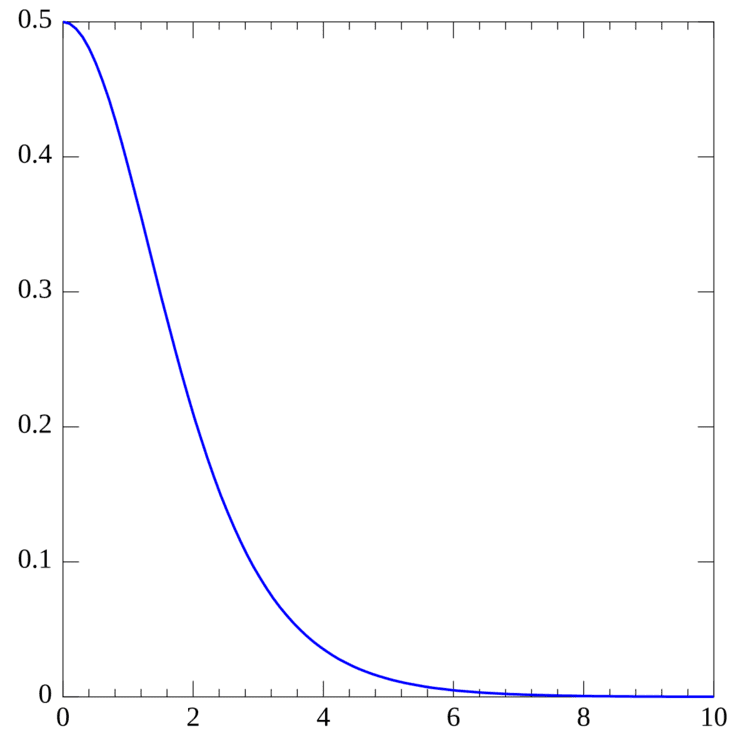Mode 0 | ||
 | ||
Support k ∈ [ 0 ; ∞ ) {\displaystyle k\in [0;\infty )\!} PDF 2 e − k ( 1 + e − k ) 2 {\displaystyle {\frac {2e^{-k}}{(1+e^{-k})^{2}}}\!} CDF 1 − e − k 1 + e − k {\displaystyle {\frac {1-e^{-k}}{1+e^{-k}}}\!} Mean log e ( 4 ) = 1.386 … {\displaystyle \log _{e}(4)=1.386\ldots } Median log e ( 3 ) = 1.0986 … {\displaystyle \log _{e}(3)=1.0986\ldots } | ||
In probability theory and statistics, the half-logistic distribution is a continuous probability distribution—the distribution of the absolute value of a random variable following the logistic distribution. That is, for
Contents
where Y is a logistic random variable, X is a half-logistic random variable.
Cumulative distribution function
The cumulative distribution function (cdf) of the half-logistic distribution is intimately related to the cdf of the logistic distribution. Formally, if F(k) is the cdf for the logistic distribution, then G(k) = 2F(k) − 1 is the cdf of a half-logistic distribution. Specifically,
Probability density function
Similarly, the probability density function (pdf) of the half-logistic distribution is g(k) = 2f(k) if f(k) is the pdf of the logistic distribution. Explicitly,
References
Half-logistic distribution Wikipedia(Text) CC BY-SA
